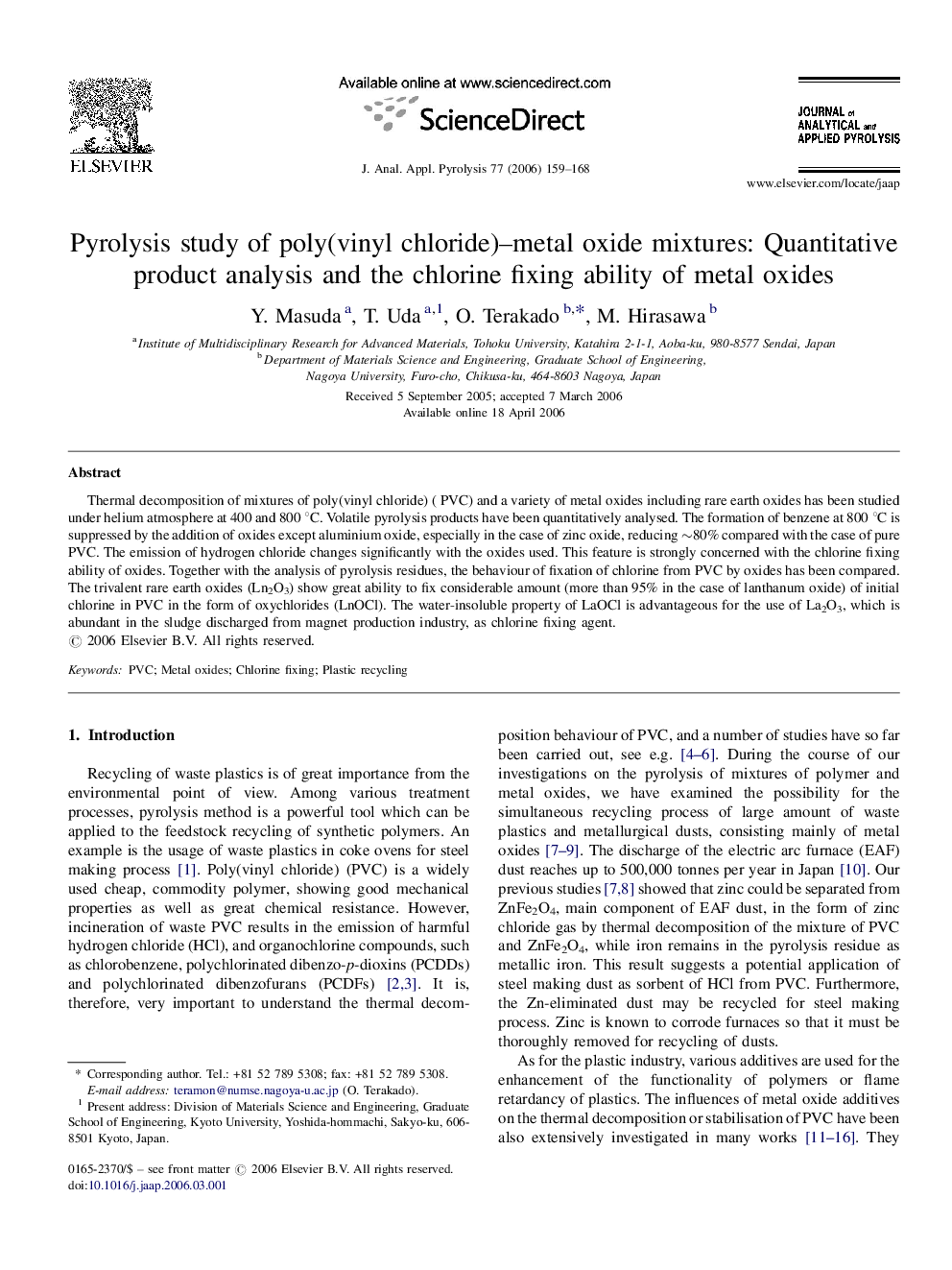| Article ID | Journal | Published Year | Pages | File Type |
|---|---|---|---|---|
| 1198033 | Journal of Analytical and Applied Pyrolysis | 2006 | 10 Pages |
Thermal decomposition of mixtures of poly(vinyl chloride) ( PVC) and a variety of metal oxides including rare earth oxides has been studied under helium atmosphere at 400 and 800 °C. Volatile pyrolysis products have been quantitatively analysed. The formation of benzene at 800 °C is suppressed by the addition of oxides except aluminium oxide, especially in the case of zinc oxide, reducing ∼80% compared with the case of pure PVC. The emission of hydrogen chloride changes significantly with the oxides used. This feature is strongly concerned with the chlorine fixing ability of oxides. Together with the analysis of pyrolysis residues, the behaviour of fixation of chlorine from PVC by oxides has been compared. The trivalent rare earth oxides (Ln2O3) show great ability to fix considerable amount (more than 95% in the case of lanthanum oxide) of initial chlorine in PVC in the form of oxychlorides (LnOCl). The water-insoluble property of LaOCl is advantageous for the use of La2O3, which is abundant in the sludge discharged from magnet production industry, as chlorine fixing agent.
